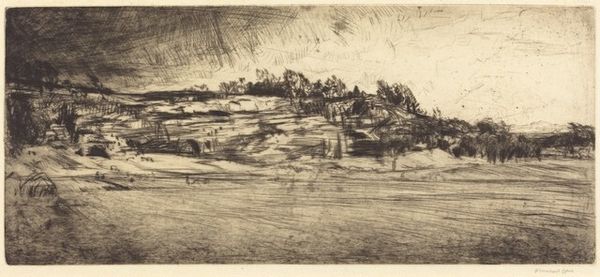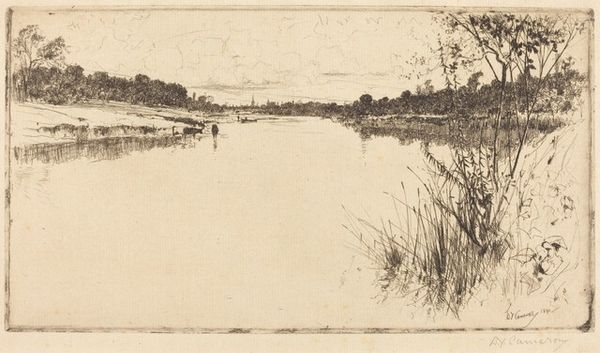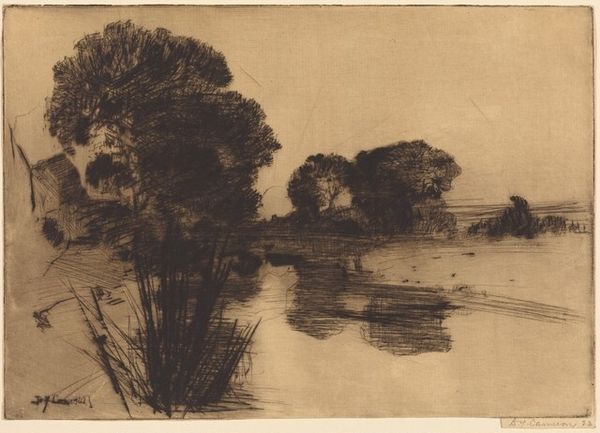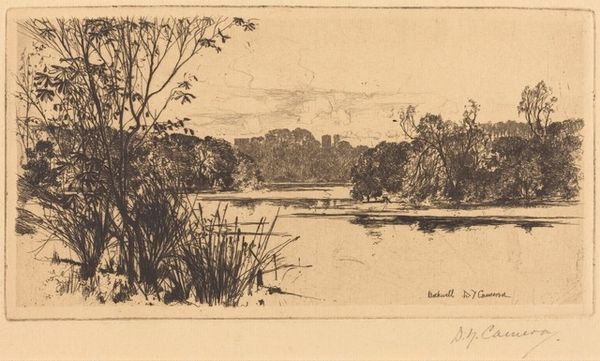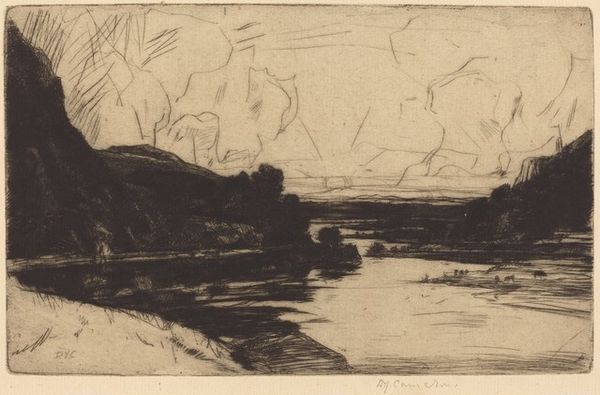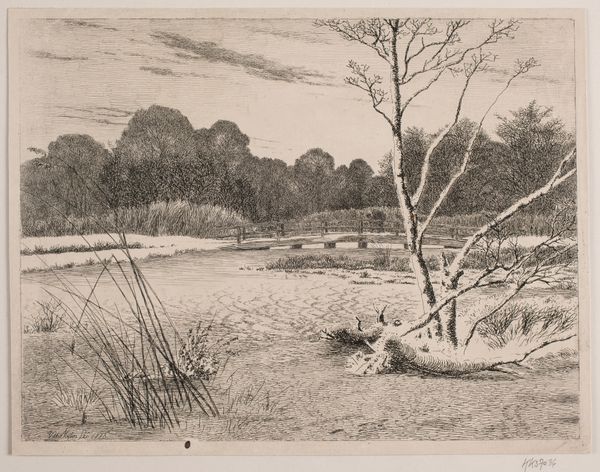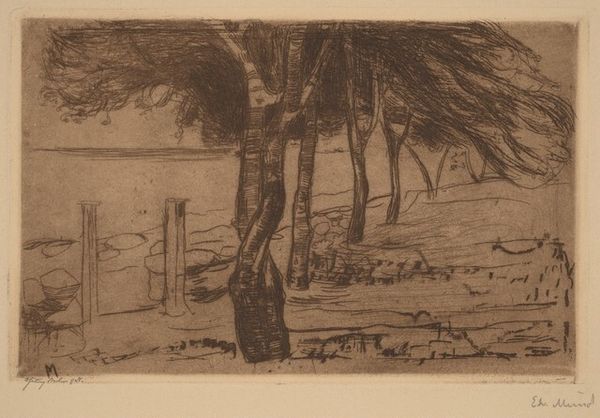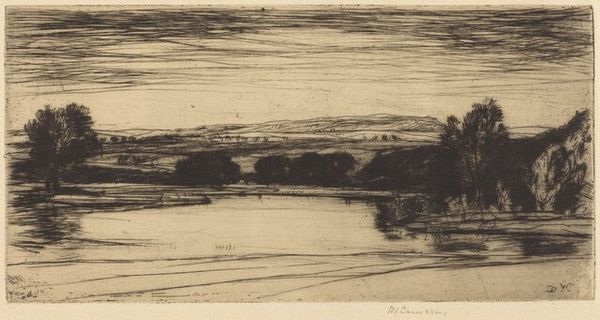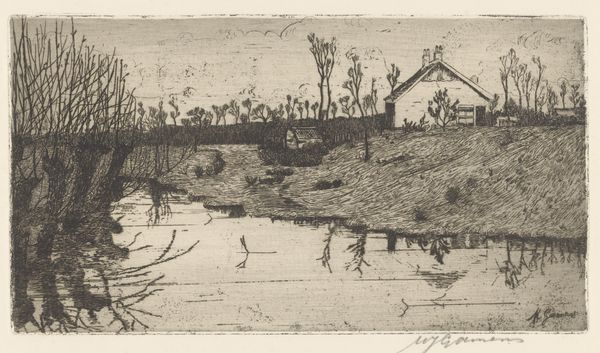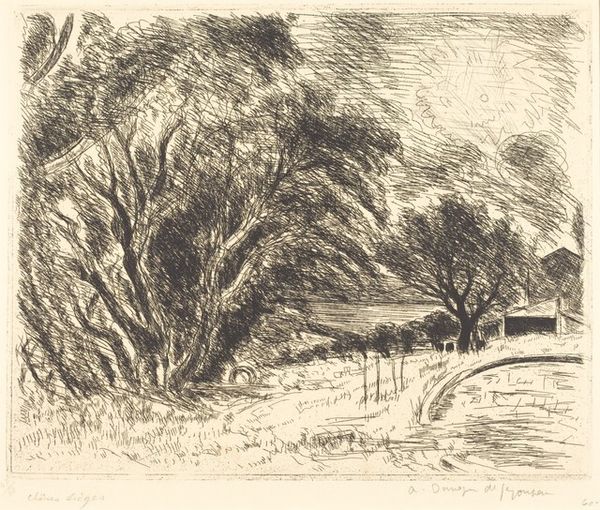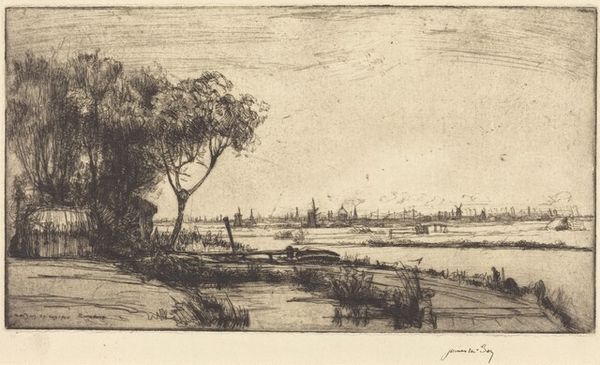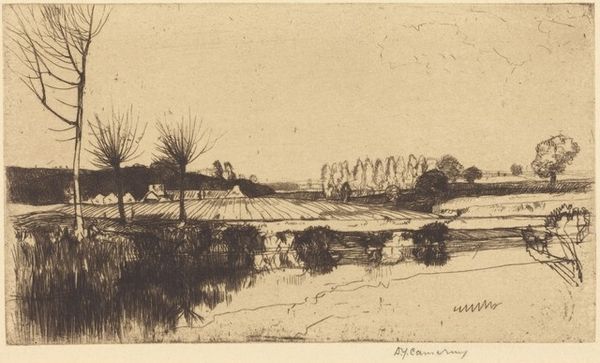
#
amateur sketch
#
light pencil work
#
quirky sketch
# print
#
pen sketch
#
pencil sketch
#
incomplete sketchy
#
personal sketchbook
#
pen-ink sketch
#
sketchbook drawing
#
sketchbook art
Dimensions: plate: 7.6 x 22.6 cm (3 x 8 7/8 in.)
Copyright: National Gallery of Art: CC0 1.0
Curator: Let's discuss this understated print, David Young Cameron's "Evening" from 1888. The medium, a print, presents itself in shades of sepia, evoking a sense of quiet nostalgia. Editor: It strikes me as deliberately unromantic; a damp sort of scene. The low horizon and muted tones create an atmosphere that is more melancholy than beautiful, wouldn’t you say? Curator: Undoubtedly. But observe the composition—the contrast between the intricate details in the foreground reeds and the deliberately vague suggestion of the setting sun. The interplay is remarkable. There’s a structural tension, wouldn’t you agree, between specificity and generalization? The scene becomes universal, yet undeniably material through these structural components. Editor: Certainly, but I think the social context enhances its reading, too. This image seems reflective of a broader 19th-century trend—an ambivalence toward nature that permeates literature and the visual arts as a social critique of industrial growth. Think of it as an elegy of sorts for vanishing rural scenes and communities of the period. Curator: That is interesting, but it also appears very consistent with artistic exploration. Note how the light itself seems fractured, almost stylized. The composition, for example, directs the eye from the lower right to the upper left through diagonals created with dark and light contrast. The linear qualities are emphasized, particularly within the vegetation; they bring the image alive formally. Editor: But let’s not dismiss the political aspects of representing rural space, particularly from this vantage point. Pictures of this kind were increasingly important at this time; art became a carrier of ideological content that served varied cultural and political purposes and addressed questions of landscape preservation. How art served that function in the Scottish art scene deserves attention. Curator: I see your point; social narratives shape our interpretations, no question about that, but focusing too much on historical conditions risks missing what this artist actually does on paper. It all depends what the viewer values when seeking art! Editor: Yes, but also what history wants it to be. A negotiation?
Comments
No comments
Be the first to comment and join the conversation on the ultimate creative platform.
